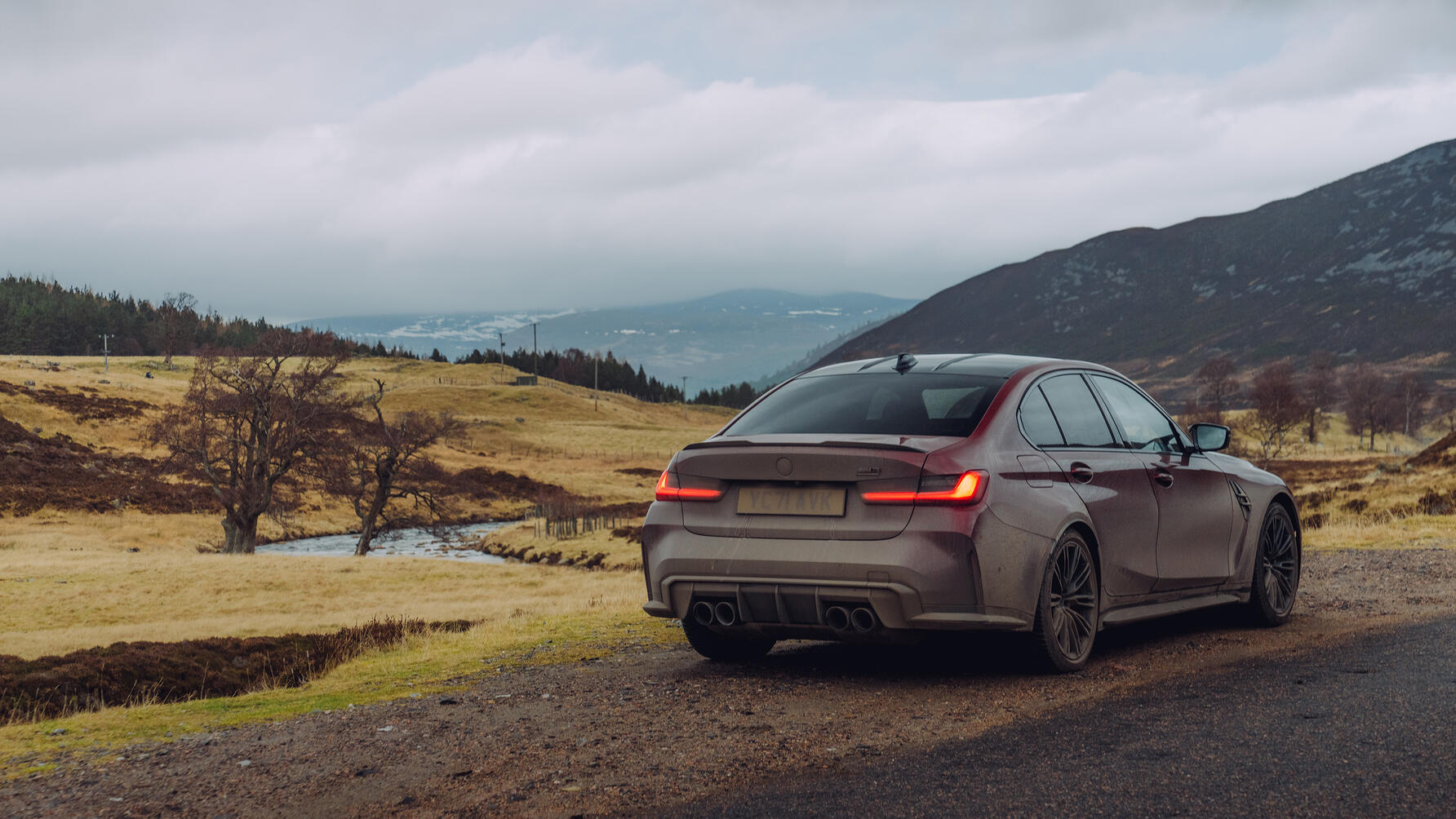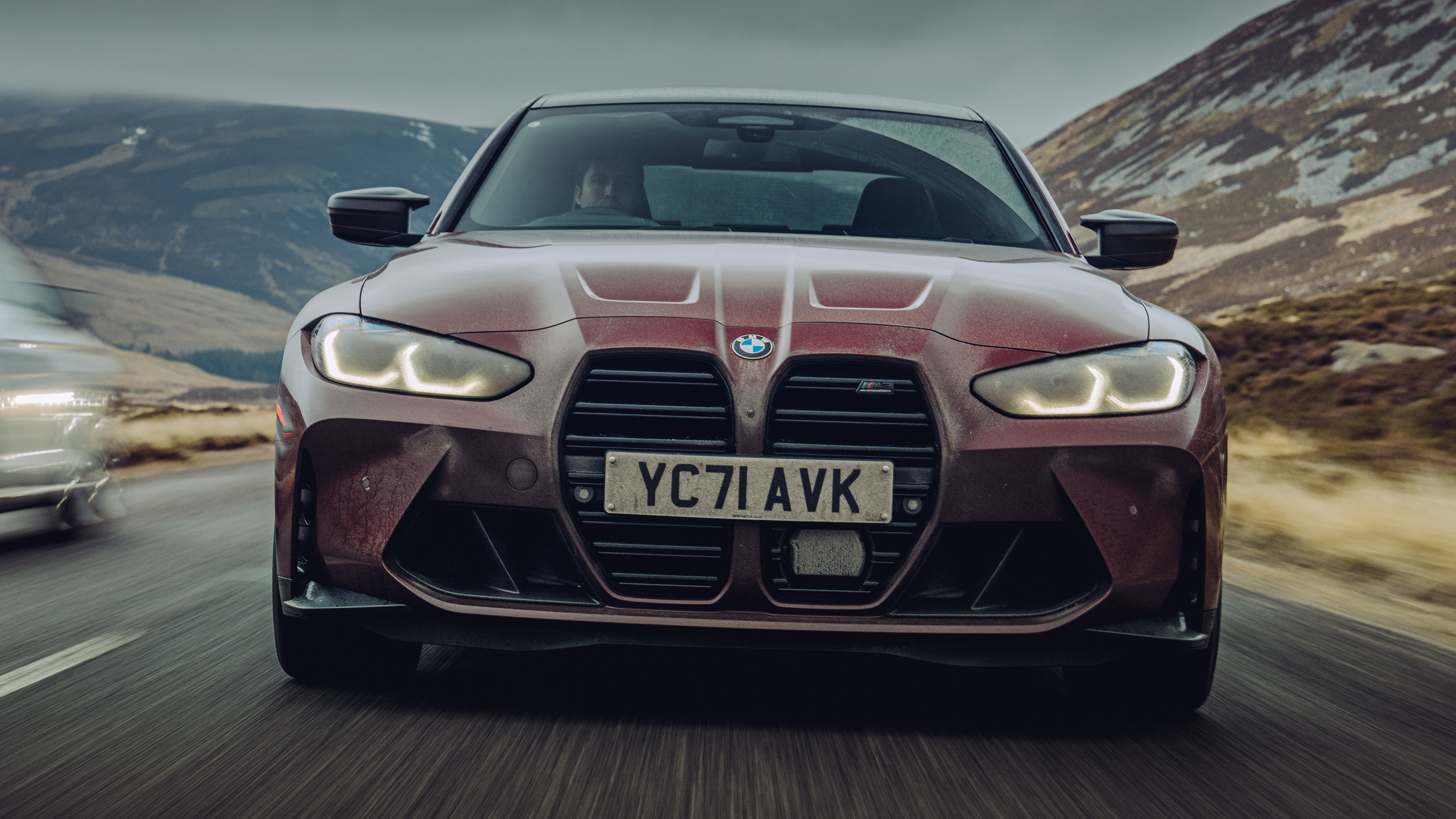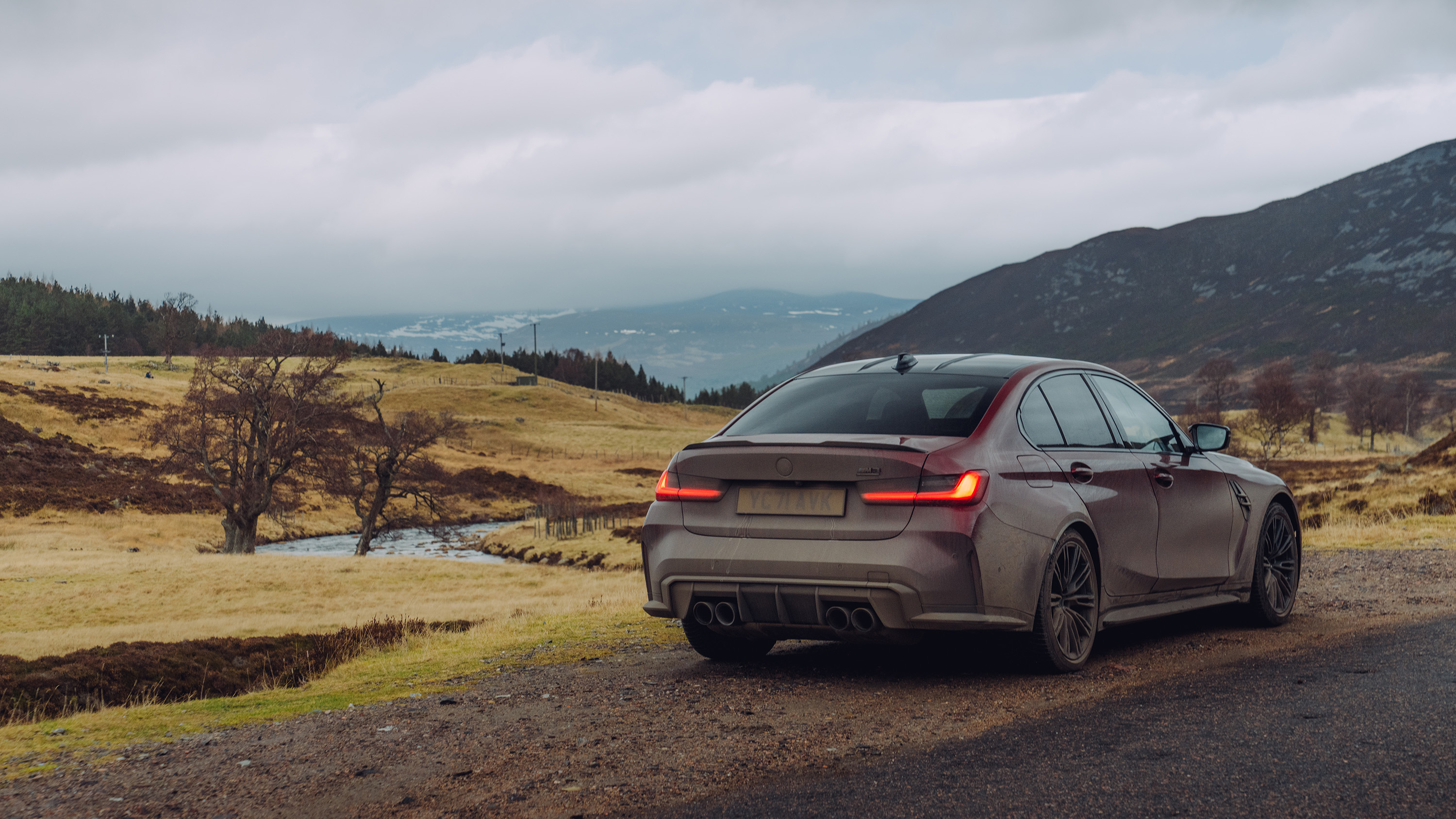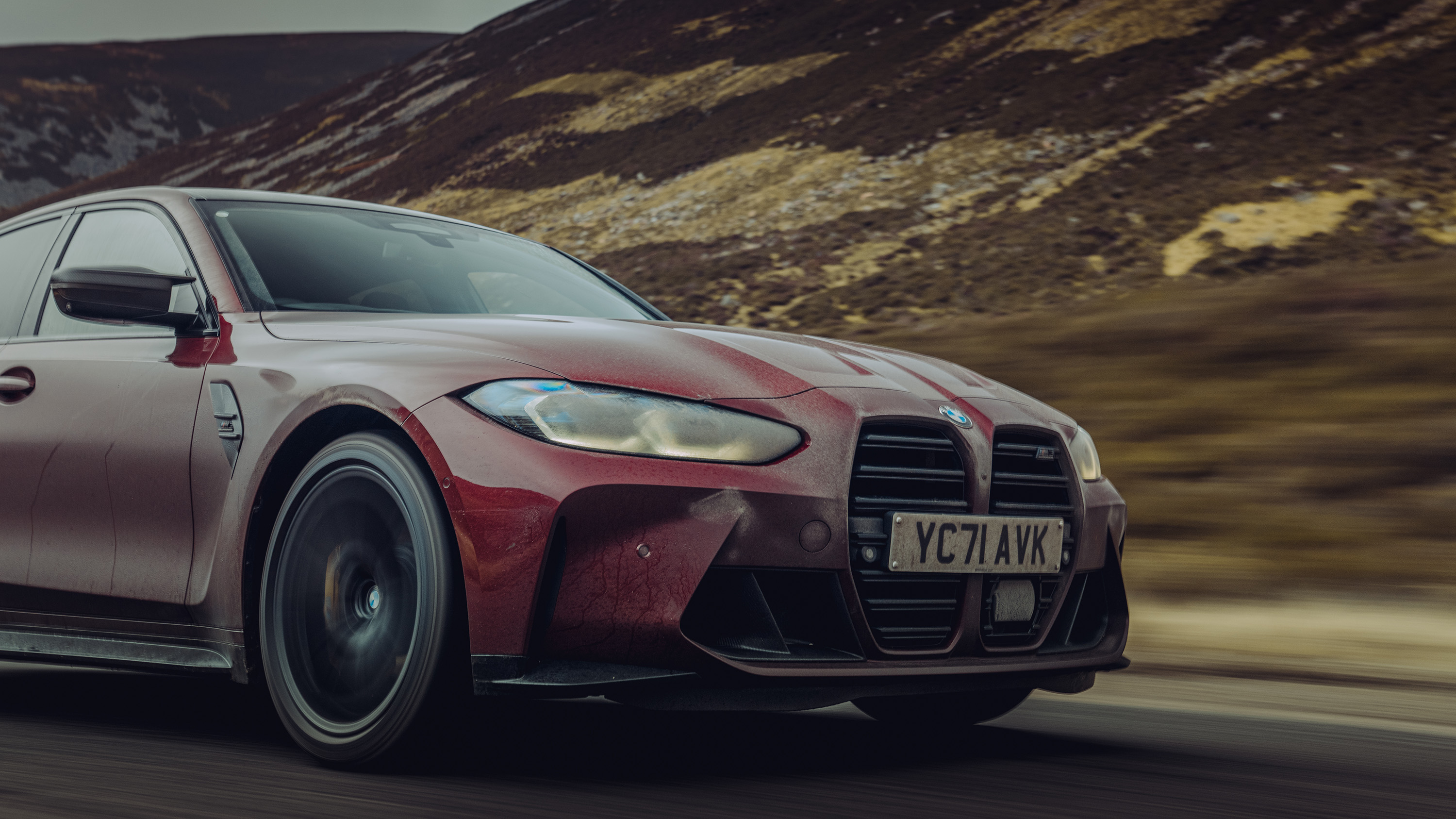
BMW M3 Competition – long-term review
£74,000 / as tested £87,000 / £1,260 PCM
How does the the BMW M3's 4WD system work?
It may have taken BMW 35 years to double the driveshafts and send shove to the front wheels of an M3, but how exactly does its four-wheel-drive system (‘M xDrive’ in BMW speak) actually work? Well, strap on your bestest brain as it isn’t your traditional 4WD system.
The benefits of having an all-wheel-drive system are simple: it adds more traction and therefore performance (4WD M3s need just 3.5 seconds to reach 62mph from a standstill, making them 0.4 seconds quicker than a rear-wheel-drive equivalent). Not only that, four driven wheels also adds security while also making the car more usable in a wider spread of conditions. Especially useful in a 500bhp performance saloon, something I’m finding on the grip deficient roads of winter.
However, there are drawbacks. It's heavier (50kg in the case of the M3) and as soon as you start adding longitudinal power and drive through the front wheels there is less capacity for lateral forces. So you get understeer. Understeer = bad. Especially for BMW stalwarts who see anything with an M badge as having to arrive in any situation with overwhelming angles of oversteer.
But unlike Audi’s permanent 4WD system, its German rivals have tried to negate the use of the front wheels as much as possible, only engaging them when necessary. With the M3 there is no fixed torque split between front and rear axles. Torque is continuously shifted between front and rear but is heavily biased to the rear wheels all the time. Not only does it decouple the fronts for efficiency, but also so as not to corrupt the crisp (but numb) steering as the M3 actively lowers the front axle torque while cornering.
Who is the conductor in this orchestra of torque and shove? A Latitude Dynamics Manager (LDM) is bolted to the brake unit where the ECU also lives. It senses where power is needed by sniffing out available traction 100 times a second by using sensors for lateral acceleration, engine torque, wheel slip, pedal angles, steering angles and whether you had semi-skimmed or full fat milk on your cereal this morning.
The LDM then juggles the all-wheel clutch in the transfer case as well as the tremendous limited-slip e-diff on the back axle to fire drive forward when it’s had a chat with the traction coefficient manager who has worked out what’s under the tyres and how much purchase is available. All in the time it takes you to try and blink. That’s not all, there’s another layer of complexity and choice, as like in the latest BMW M5 and M8, the M3 has three flavours to choose from in terms of where and how your power is sent: 4WD, 4WD Sport and 2WD.
In the default 4WD setting, the all-wheel-drive system offers maximum traction and most neutral handling while maintaining a distinctly rear-biased power split. The safety net is just there to catch you a lot sooner. Switching to 4WD Sport sends an even greater proportion of the engine’s torque to the rear wheels, even in extremely dynamic driving situations, resulting in sharper agility. This is when the car feels incredibly playful and a bit Nissan GT-R-like as there’s a linear build-up of bum shuffling sideways but also the front dragging you out of corners, which is remarkably satisfying as you feel the performance of the car being used in an effective and very entertaining way.
If you fall out with the front axle completely (or are feeling remarkably brave), you can also switch off the DSC system altogether and engage 2WD mode, where drive power is relayed solely to the rear wheels. If the optional M traction control is fitted (which it is in our car), intervention can be set through 10 stages. Or you turn it off-off and fly solo.
You can feel the more sporting nature and tune of this 4WD system compared with an M340i xDrive. There is noticeably more rear bias (helped given you’ve got more power) but everything has been beefed up. The M3 can compute faster adjustments to the transfer case clutch pack as well as them being fortified so they don’t fry on track. That’s not the only thing that’s been upgraded, as the M3 specific driveshafts and output shafts (that relay the drive torque to the wheels) are also bespoke.
With 4WD the new favoured performance drivetrain – remember the Mercedes C63 is switching sides later this year, too – it’s rapidly become the norm. Personally, I’m not going to kick up a fuss if this is the kind of system we have to play with. They’re getting so clever and tunable (ultimately allowing you to have a 2WD if you want it) it’s literally the best of both worlds.
So far I’ve found the M3’s system to be tremendously well integrated and it hasn’t changed the attitude or fun of the car – just made it slightly friendlier. The belief that 4WD is boring is down to 4WD systems that prioritise sure-footed security rather than using the benefits of all four corners for enjoyment. I’m glad to report the M3’s system is the opposite.
Pros: The M3’s clever, rear-biased 4WD system isn’t a chastity belt for fun
Cons: I’m sure some of the driver tech isn’t as resolved as our 2WD car. More investigation needed.
Mileage: 4,619
MPG: 28.4

Featured

Trending this week
- Car Review
BMW iX3






